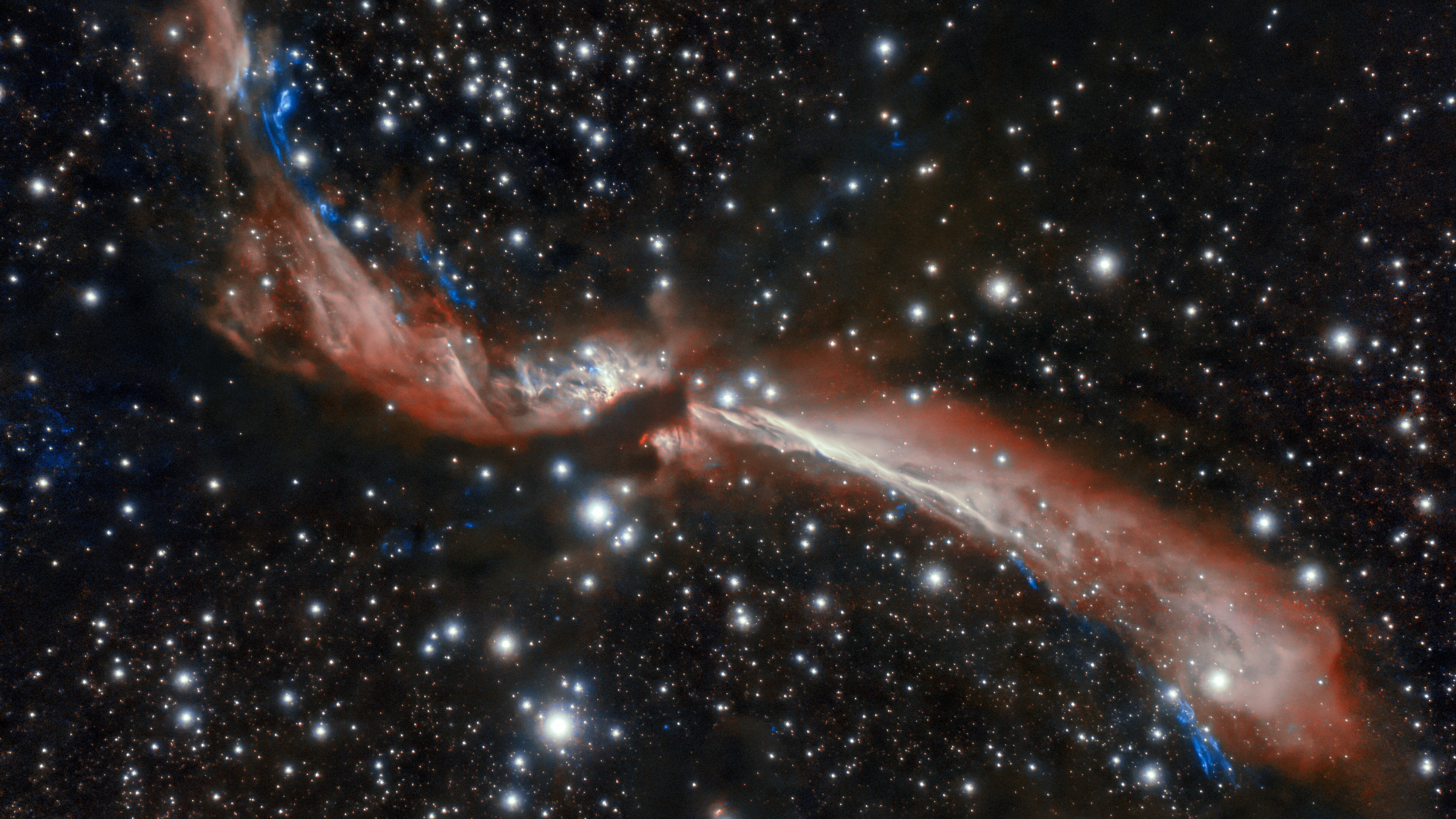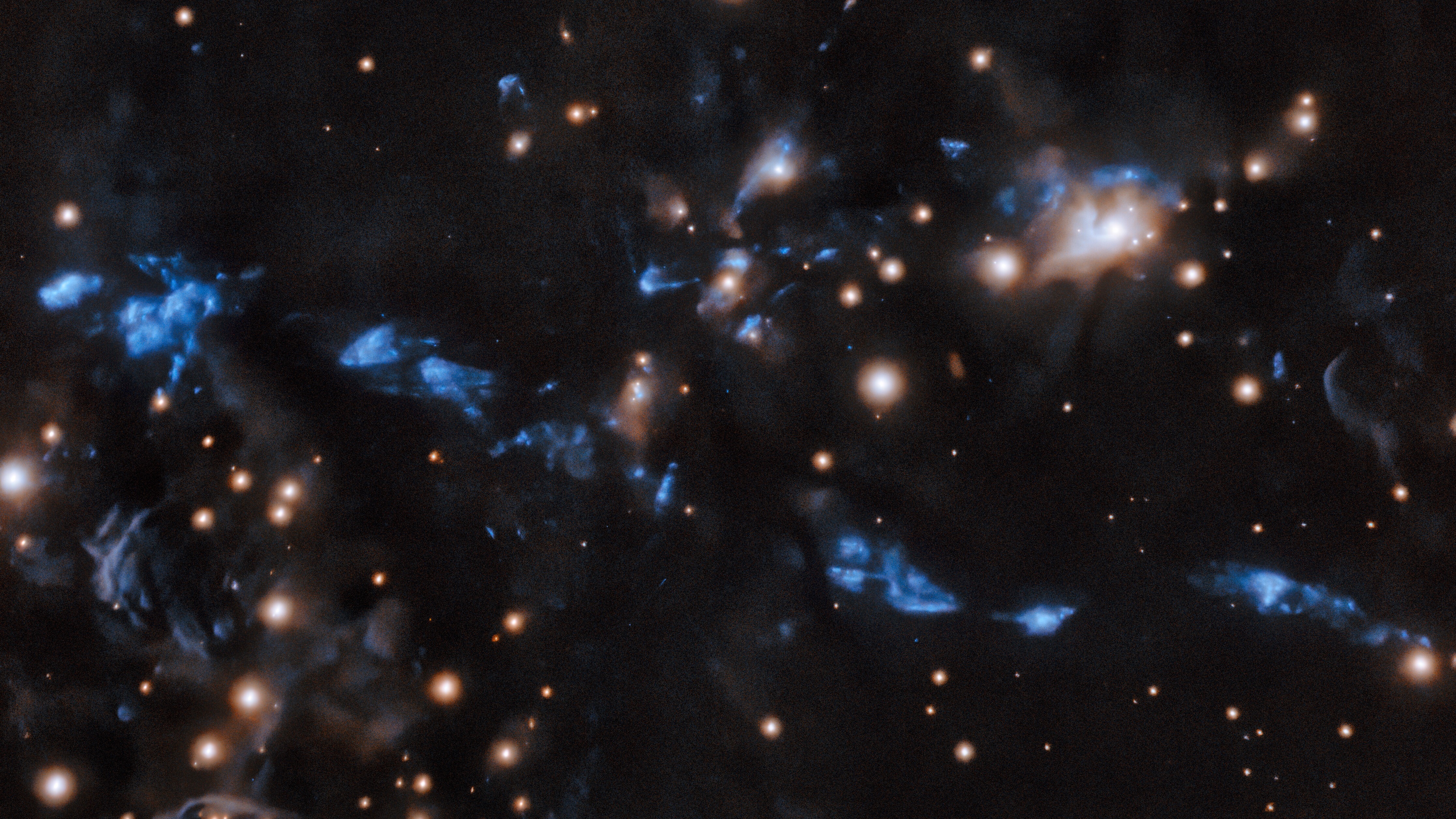Stellar jets twist and turn through space in entrancing new photos

Young stars emit gently curving stellar jets in stunning new photos from the Gemini South telescope in Chile.
The sinuous stellar jets are the by-product of star formation. Their winding appearance is caused by the gravitational attraction of companion stars, according to a statement from the National Science Foundation's National Optical-Infrared Astronomy Research Laboratory (NOIRLab).
As the young stars rotate, their magnetic fields interact with the surrounding gas, creating the two streams of ionized gas emitted in opposite directions, which can be seen in the new photos taken by the Gemini South telescope, located on a mountain in the Chilean Andes and operated by NOIRLab.
Related: Young stars illuminate 'Chamaeleon' stellar nursery in new Hubble imag
Gemini South is a 8.1-meter optical/infrared telescope that uses an adaptive optics system, allowing astronomers to counteract the blurring effects of space and capture the "crystal-clear" observations of these winding stellar jets, according to the statement.
The first image captures MHO 2147, a stellar jet located 10,000 light-years from Earth in the galactic plane of the Milky Way. It lies close to the boundary between the constellations Sagittarius and Ophiuchus, the Snake Bearer.
"MHO 2147 snakes across a starry backdrop in the image — an appropriately serpentine appearance for an object close to Ophiuchus," officials said in the NOIRLab statement.
Get the Space.com Newsletter
Breaking space news, the latest updates on rocket launches, skywatching events and more!
Gemini South also photographed MHO 1502, a stellar jet located about 2,000 light-years from Earth in the constellation of Vela. This stellar jet boasts a knotted appearance, which suggests it is the by-product of two stars that periodically emit outflows of gas.

"Most stellar jets are straight but some can be wandering or knotted," officials said in the statement. "The shape of the uneven jets is thought to be related to a characteristic of the object or objects that created them."
MHO 2147 is embedded in an infrared-dark cloud, which is a cold, dense region of gas that doesn't emit much infrared light. The jet itself is produced by a young star called IRAS 17527-2439, and has changed direction over time, causing the outflows on either side of the star to twist and turn through space.
The recent observations suggest IRAS 17527-2439 may belong to a triple star system separated by nearly 200 billion miles (more than 300 billion kilometers). Therefore, the jet's changing direction may be caused by the gravitational interactions between IRAS 17527-2439 and other nearby stars, according to the statement.
Unlike MHO 1502, the winding appearance of MHO 2147 has been sculpted by continuous emission from its central star. However, MHO is embedded in a much different environment — an area of star formation known as an HII region, which may help explain its knotted appearance.
The findings were published Jan. 20 in the journal Astronomy & Astrophysics.
Follow Samantha Mathewson @Sam_Ashley13. Follow us on Twitter @Spacedotcom and on Facebook.
Join our Space Forums to keep talking space on the latest missions, night sky and more! And if you have a news tip, correction or comment, let us know at: community@space.com.

Samantha Mathewson joined Space.com as an intern in the summer of 2016. She received a B.A. in Journalism and Environmental Science at the University of New Haven, in Connecticut. Previously, her work has been published in Nature World News. When not writing or reading about science, Samantha enjoys traveling to new places and taking photos! You can follow her on Twitter @Sam_Ashley13.









